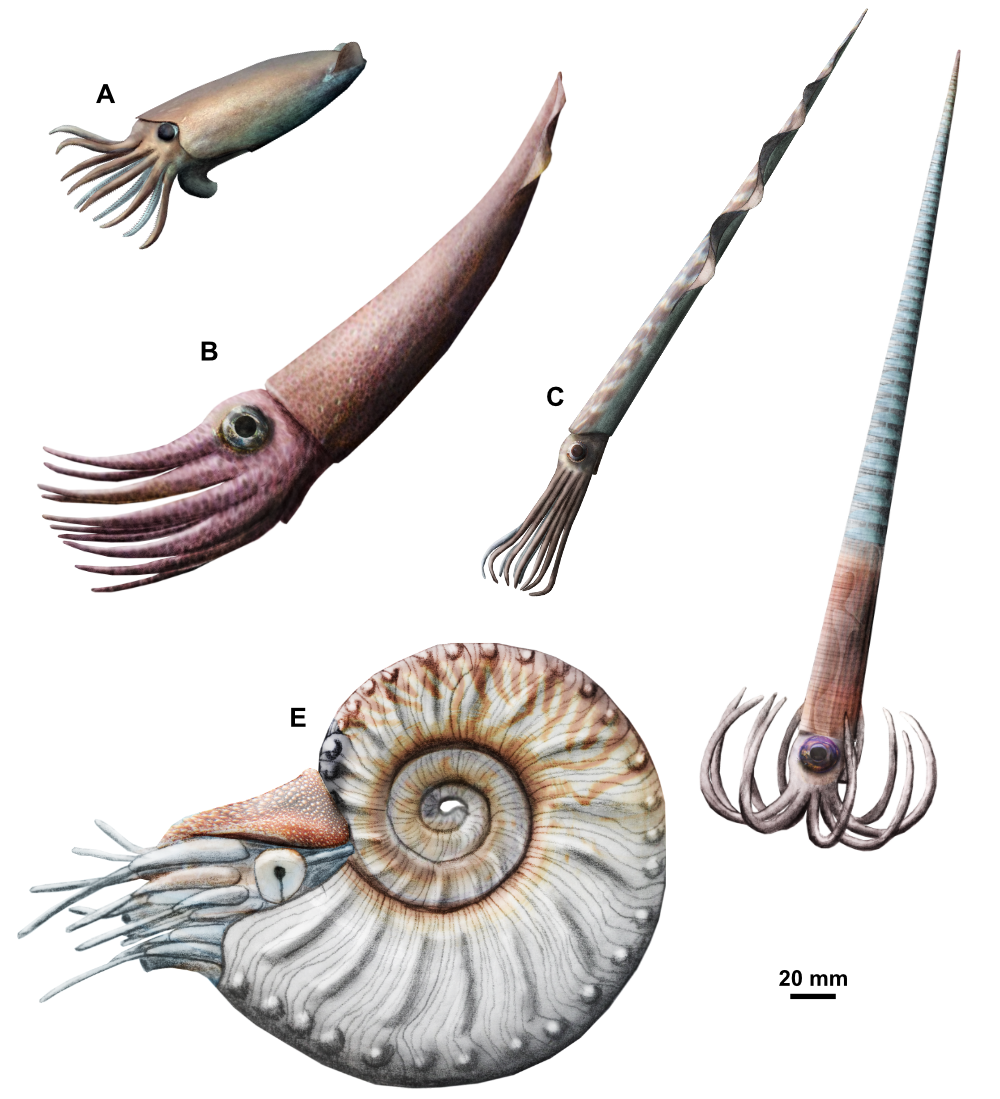Orthoconic cephalopods from the Middle Triassic at Monte San Giorgio (Switzerland)
While registering invertebrates from the Besano Formation (Middle Triassic, Monte San Giorgio, Switzerland) into the database for the subsequent move of the collections of the Palaeontological Institute of the University of Zurich to a new facility, I recognised that there were several previously undescribed records of orthoconic cephalopods. Since 2024 was also the year of the 100 years anniversary of the excavations at Monte San Giorgio, we decided that this would be a good opportunity to turn this into a short research project.
The orthoconic cephalopods from this collection belong to two unrelated groups: coleoids and orthoceratoids. Since the coleoids from Monte San Giorgio are only preserved as phragmocones, it is not always easy to distinguish between the two groups when preservation is poor. In addition, we soon realised that any in-depth taxonomic treatment of Triassic orthoceratoids would require a review of the current state of resarch, because despite little progress in the past 100 years, the literature was quite scattered and no general synthesis had been provided apart from a monograph in Russian language (Schastlivceva 1988).
The goal of our study was thus twofold: first, we described orthoconic cephalopods from the Besano Formation at Monte San Giorgio (Fig. 1), and second, we reviewed and updated the taxonomic framework of Triassic orthoceratoids from a global perspective (Pohle & Klug 2024).
 Fig. 1. Reconstructions of non-ammonoid cephalopods from the Besano Formation. A) Breviconoteuthis breviconus. B) Mojsisovicsteuthis sp. C) Ticinoteuthis chuchichaeschtli. D) Trematoceras elegans. E) Enoploceras rieberi. From Pohle & Klug (2024).
Fig. 1. Reconstructions of non-ammonoid cephalopods from the Besano Formation. A) Breviconoteuthis breviconus. B) Mojsisovicsteuthis sp. C) Ticinoteuthis chuchichaeschtli. D) Trematoceras elegans. E) Enoploceras rieberi. From Pohle & Klug (2024).
Our study showed that the orthoceratoids in the Besano Formation belong to Trematoceras elegans, while the coleoids belong to several different genera and appear to be more short-lived. We also described a new genus and species, which we called Ticinoteuthis chuchichaeschtli, after a famous Swiss-German word that is commonly used as a challenge to pronounce for non-native speakers (shibboleth).
In our taxonomic review, we showed that the Triassic orthoceratoids likely belong to a single lineage, the Trematoceratidae of the Pseudorthoceratida. Note that the common labelling of specimens like these as “Orthoceras” or “Michelinoceras” even in museum exhibitions is incorrect, as these refer to Palaeozoic orthoceratid genera within a well-defined scope. In most cases, Triassic orthoceratoids probably belong to Trematoceras, although there are at least two further genera (Pohle & Klug 2024). With this revised classification, we hope to encourage further research on these taxa.
References
- Pohle, A. & Klug, C. (2024). Orthoceratoid and coleoid cephalopods from the Middle Triassic of Switzerland with an updated taxonomic framework for Triassic Orthoceratoidea. Swiss Journal of Palaeontology, 143, 14. https://doi.org/10.1186/s13358-024-00307-8
- Schastlivceva, N.P. (1988). Triasovye ortozeratidy i nautilidy SSSR [Triassic orthoceratoids and nautiloids of the USSR]. Akademiya Nauk SSSR, Trudy Paleontologicheskogo Instituta, 229, 1-104. (in Russian).
